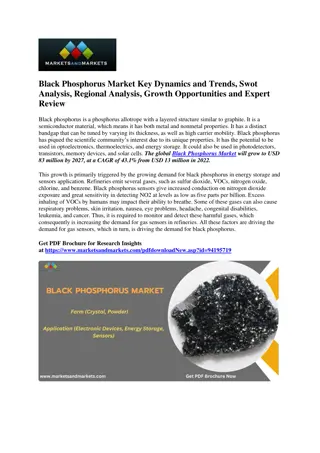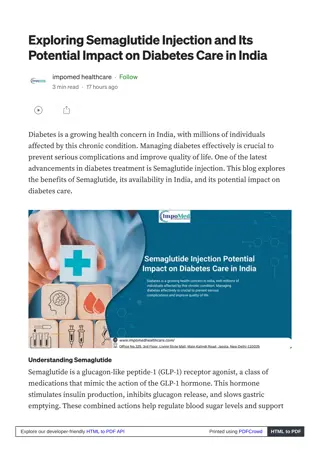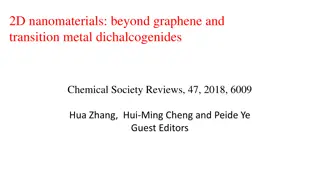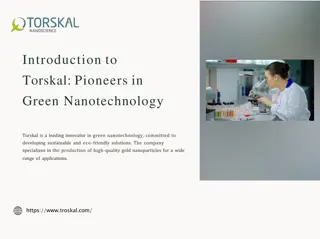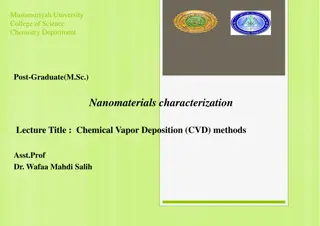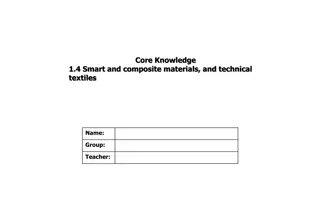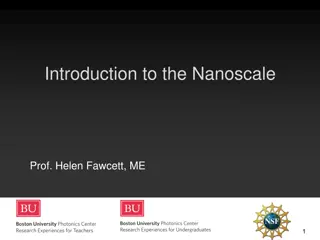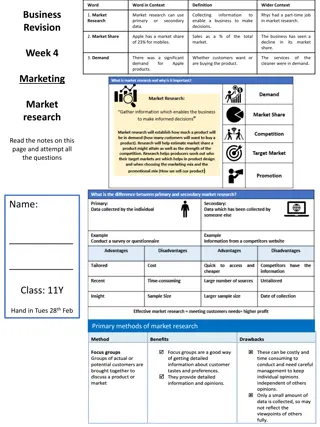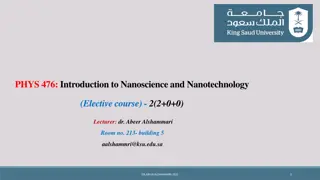
Global Nanomaterials Market: Pioneering the Future of Material Science
Global Nanomaterials Market was valued at USD 12.4 Billion, and is expected to reach USD 45.6 Billion in 2032 Between 2023 and 2032, this market is estimated to register a CAGR of 13.9%.n
Download Presentation

Please find below an Image/Link to download the presentation.
The content on the website is provided AS IS for your information and personal use only. It may not be sold, licensed, or shared on other websites without obtaining consent from the author. If you encounter any issues during the download, it is possible that the publisher has removed the file from their server.
You are allowed to download the files provided on this website for personal or commercial use, subject to the condition that they are used lawfully. All files are the property of their respective owners.
The content on the website is provided AS IS for your information and personal use only. It may not be sold, licensed, or shared on other websites without obtaining consent from the author.
E N D
Presentation Transcript
Overview In 2022, the Global Nanomaterials Market was valued at USD 12.4 Billion, and is expected to reach USD 45.6 Billion in 2032 Between 2023 and 2032, this market is estimated to register a CAGR of 13.9%. The global nanomaterials market refers to the industry that produces, distributes, and utilizes materials with particles or components that measure less than 100 nanometers in at least one dimension. These materials, which include nanoparticles, nanofibers, nanotubes, and nanowires, exhibit unique physical, chemical, and biological properties compared to their bulk counterparts. This makes them incredibly valuable in a wide range of applications, including electronics, healthcare, energy, and environmental protection. For example, nanomaterials can be used in drug delivery systems to target specific cells in the body, improve the efficiency of solar panels, and create stronger and lighter materials for manufacturing. The market for nanomaterials is driven by continuous technological advancements and increasing demand from various end-use industries. As industries strive for miniaturization and enhanced performance, the role of nanomaterials becomes even more crucial. However, the market also faces challenges, such as high production costs and potential environmental and health risks associated with nanomaterial exposure. Despite these
challenges, the global nanomaterials market is expected to grow significantly in the coming years, driven by ongoing research and development, supportive government initiatives, and the rising adoption of nanotechnology across multiple sectors. Key Market Segments Based on Type Metal Platinum Gold Silver Copper Nickel Iron Others Metal Oxides Titanium Dioxide Zinc Oxide Silicon Dioxide Aluminium Oxide Others Carbon-based Carbon-black Carbon Nanotubes Graphene and Graphene Oxide Fullerenes Others Nanoclays Nanocellulose Dendrimers-based
Based on End-use Medical Electrical & Electronics Paints & Coatings Energy & Power Aerospace & Defense Automotive Others Download a sample report in MINUTES@https://market.us/report/nanomaterials-market/request-sample/ The nanomaterials market is segmented by type into metal, metal & non-metal oxides, carbon-based, nanoclays, nanocellulose, and dendrimers-based. In 2022, the metal & non-metal oxides segment held the largest market share at 73.8% and is projected to grow at a CAGR of 14.9%. By end-use, the market is segmented into medical, electrical & electronics, paints & coatings, energy & power, aerospace & defense, automotive, and others. The medical segment was the most lucrative in 2022, with a 30.2% market share. Market Key Players American Elements ACS Material LLC Arkema Cabot Corporation Nanoshel LLC SkySpring Nanomaterials US Research Nanomaterials, Inc. Nanophase Technologies Corporation Chengdu Organic Chemicals Co. Ltd. (Timesnano) Jiangsu Cnano Technology Co., Ltd
Quantum Materials Corporation Cytodiagnostics Inc Fortis Life Sciences OCSiAl Raymor Industries Inc. Other Key Players Driver: The rising adoption of nanomaterials in the medical industry, particularly for treating cancer and other malignant tumors, is a significant growth driver. Increased investments from research institutions and the biomedical industry are focused on expanding nanomaterial applications in targeted drug delivery, gene therapy, and advanced imaging. For instance, the U.S. National Institute of Health allocated approximately $445 million in 2020 for advancements in nanomedicine, highlighting the substantial potential for growth in healthcare applications. Restraint: The nanomaterials market faces challenges from stringent regulations due to concerns over their impact on human health and the environment. Government bodies, such as the International Agency for Research on Cancer (IARC), have highlighted potential health risks, like the link between titanium dioxide (E171) and colorectal cancer. Additionally, countries like China have implemented strict guidelines for advanced material manufacturing, posing regulatory hurdles for the industry. Opportunity: There is significant growth potential in the medical field, especially in cancer treatment using nanoparticles. The emphasis on research and development in nanomedicine offers new opportunities for innovations in targeted therapies, diagnostics, and surgical procedures. The growing funding and support for nanotechnology research underscore the vast prospects for advancements and commercialization in healthcare. Challenge: Navigating the complex regulatory landscape is a key challenge for the nanomaterials market. Companies must comply with diverse and evolving regulations across different regions, which can slow down innovation and increase operational costs. Balancing regulatory compliance with the need for technological advancement is crucial for sustaining growth and fostering innovation in the nanomaterials sector.





